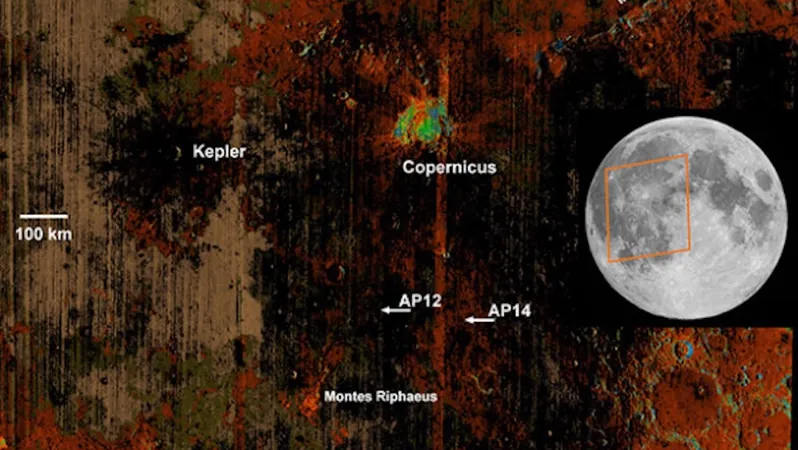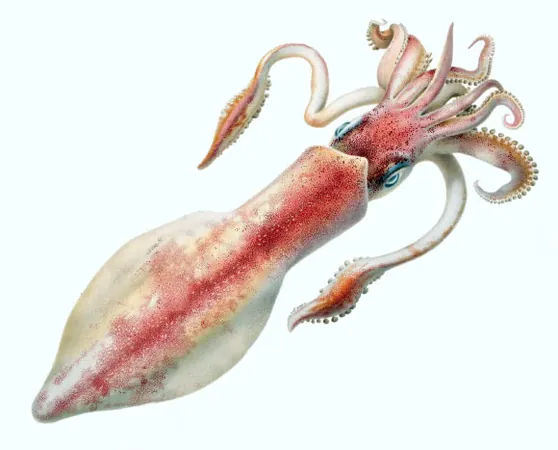
Revolutionizing Planetary Exploration: Meet the Tetracorder!
2025-01-07
Author: Ming
Introduction
In the dazzling world of science fiction, Star Trek’s explorers utilize a remarkable device known as the tricorder, enabling them to sense and compute various environmental phenomena. However, in an astonishing leap beyond fiction, earthbound scientists have developed the Tetracorder—an advanced tool reshaping our approach to planetary exploration.
Technological Advancements
The Tetracorder employs imaging spectrometer data, which captures the light emitted or reflected from vast expanses of the earth's landscape, oceans, and skies, processing this information at an unprecedented speed. Recently featured in the prestigious Planetary Science Journal, a groundbreaking study reveals that advancements in Tetracorder technology now facilitate the rapid production of detailed mineral maps. These findings indicate its potential application on rovers, significantly enhancing autonomous exploration of extraterrestrial terrains.
Key Contributors
Leading the charge is Roger Clark, a Senior Scientist at the Planetary Science Institute (PSI), alongside co-authors including astro-scientists Eldar Noe Dobrea and Amanda Hendrix. This dedicated team of researchers has spent decades refining this powerful instrument, which is now integral to NASA’s Earth Surface Mineral Dust Source Investigation (EMIT) onboard the International Space Station. Notably, the EMIT instrument was recently granted an extension to its mission, allowing for even more comprehensive mapping of minerals, dust, and various bodies of water on Earth.
Historical Context
Reflecting on the evolution of spectral analysis, Clark noted, "In the 1980s and 90s, when we first started analyzing planetary spectra, researchers would often take months to evaluate just a handful of samples. The introduction of imaging spectrometers changed the game entirely, enabling us to process millions of spectra every minute."
Autonomous Mapping Capability
The Tetracorder autonomously generates intricate maps detailing hundreds of compounds, synthesizing them into user-friendly color-coded representations. This includes vital environmental data regarding water, organic materials, minerals, and even their sizes. Clark highlighted, “Now, it is as simple as specifying the compounds needed for a particular scientific inquiry; the Tetracorder can instantly produce maps as new data arrives.”
Applications on the Moon and Beyond
The Tetracorder has recently showcased its prowess by detecting water and hydroxyl on the Moon. This technology is also set to yield invaluable insights regarding Europa, Jupiter’s notoriously icy ocean moon, using data from the newly launched Mapping Imaging Spectrometer for Europa (MISE) onboard the Europa Clipper mission, which lifted off on October 14, 2024.
Recent Findings
A recent Tetracorder map of the Moon illustrates areas of water absorption, providing crucial information about the different mineral compositions. With the Copernicus crater prominently displayed, researchers can deduce the water content in lunar rocks, revealing potential resources for future missions.
Significance of Europa Clipper Mission
Clark elaborated on the significance of the upcoming Europa Clipper mission, stating, "The MISE and Tetracorder collaboration will play a critical role in deciphering the surface composition of Europa, helping us assess its potential for life. While we have detected signs of frozen acids, we also anticipate that salts from an underlying ocean may emerge, presenting a delicate balance for habitability."
Future Explorations
Insights gleaned from the Europa Clipper mission will not only guide future exploratory endeavors, including identifying optimal landing sites for rovers, but will also enhance our understanding of potential life-supporting environments beyond our home planet.
Conclusion
This revolutionary technology is bolstered through significant funding from NASA’s EMIT subcontract and other prestigious initiatives, marking a new era in the quest for knowledge beyond Earth. The future of planetary exploration looks brighter than ever with tools like the Tetracorder paving the way for exciting discoveries! Stay tuned as we continue to unravel the mysteries of the universe, one groundbreaking tool at a time.



 Brasil (PT)
Brasil (PT)
 Canada (EN)
Canada (EN)
 Chile (ES)
Chile (ES)
 Česko (CS)
Česko (CS)
 대한민국 (KO)
대한민국 (KO)
 España (ES)
España (ES)
 France (FR)
France (FR)
 Hong Kong (EN)
Hong Kong (EN)
 Italia (IT)
Italia (IT)
 日本 (JA)
日本 (JA)
 Magyarország (HU)
Magyarország (HU)
 Norge (NO)
Norge (NO)
 Polska (PL)
Polska (PL)
 Schweiz (DE)
Schweiz (DE)
 Singapore (EN)
Singapore (EN)
 Sverige (SV)
Sverige (SV)
 Suomi (FI)
Suomi (FI)
 Türkiye (TR)
Türkiye (TR)
 الإمارات العربية المتحدة (AR)
الإمارات العربية المتحدة (AR)